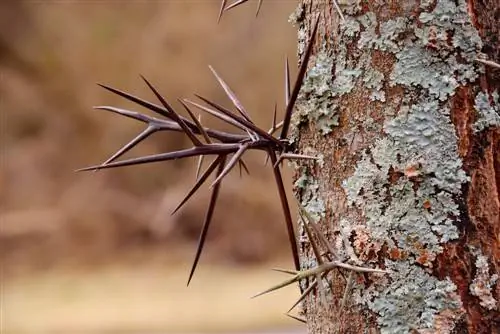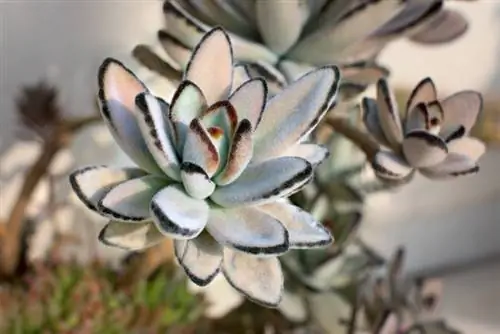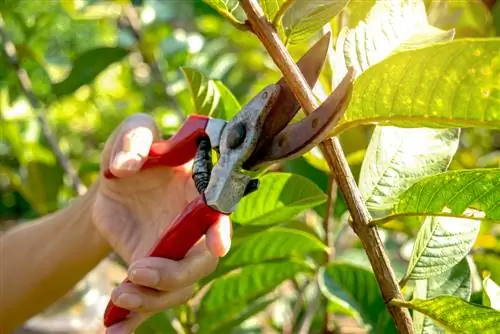- Author admin [email protected].
- Public 2023-12-16 16:46.
- Last modified 2025-06-01 06:02.
Thorns on deciduous trees are rare, but occur primarily on wild fruit and the native holly (Ilex aquifolium). The reinforcement serves to defend against possible predators, so it has a biological meaning.

Which deciduous trees have thorns?
Deciduous trees with thorns, such as wild Prunus species, wild apple (Malus sylvestris), wild pear (Pyrus pyraster), holly (Ilex), American black locust (Gleditsia triacanthos) and black locust (Robinia pseudoacacia), provide defense against predators and are native to Central Europe.
Deciduous trees with thorns - an overview
In addition to the deciduous trees listed here, some types of acacia also have thorns. However, the Acacieae, which is the correct botanical name and come from the tropics and subtropics, are not sufficiently hardy here and can therefore only be kept in containers.
Wild Prunus species
Plums as well as mirabelle plums, reneclodes, plums and apricots often have thorns in their wild form, but these often disappear as the tree or bush gets older. Thorny plums are often seedlings of cultivated forms or wild shoots that grow from the rootstock of a graft.
Wild apple (Malus sylvestris)
The wild apple, also known as crab apple or crab apple, which is widespread in Central Europe, develops numerous thorny short shoots. By the way, this is not the original form of our cultivated apple (Malus domestica) - it most likely comes from the Asian wild apple (Malus sieversii).
Wild pear (Pyrus pyraster)
Like the wild apple, the wild or wood pear also belongs to the rose family (Rosaceae). Like many members of the family, this tree, which grows up to 20 meters high, has twigs and branches lined with thorns.
Holly (Ilex)
The native holly is an evergreen, usually multi-stemmed large shrub or a tree that grows up to ten meters high. What is striking are the coarse, single, shiny dark green leaves, which are more or less wavy and prickly-toothed at the edge. So the thorns don't appear on the branches, but on the leaves.
American Gleditsia (Gleditsia triacanthos)
The Gleditschie is a solitary tree that is often planted in parks and along streets. The deciduous deciduous tree, which grows between ten and 25 meters high, has a loose, irregular and broadly spreading crown. The trunk and branches can have numerous strong, simple or branched thorns.
Robinia (Robinia pseudoacacia)
The robinia, which grows up to 25 meters high, is often incorrectly referred to as “acacia”, but is only very distantly related to it. Their twigs and young branches are typically armed with strong thorns. The black locust is one of the beekeeping plants richest in nectar and sugar.
Tip
If you come across a deciduous tree with small cones while walking, it is not a botanical sensation: instead, alders produce cone-like fruits.






